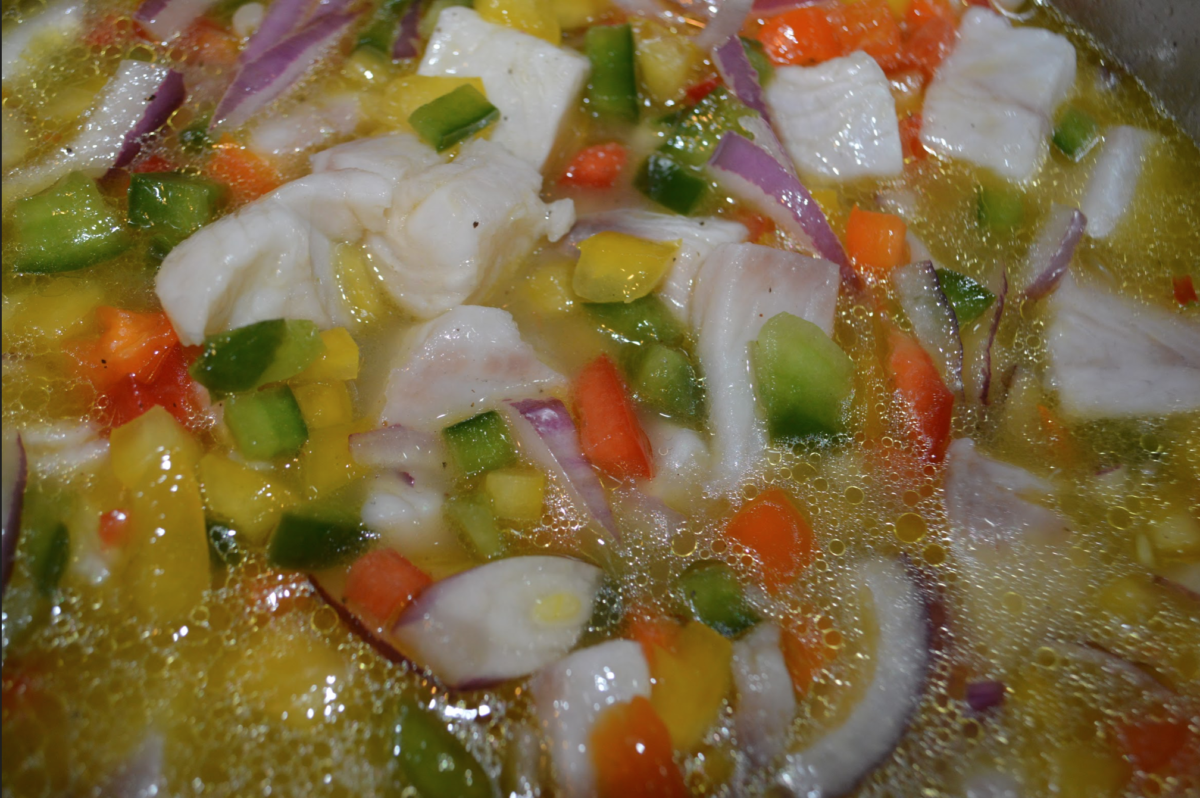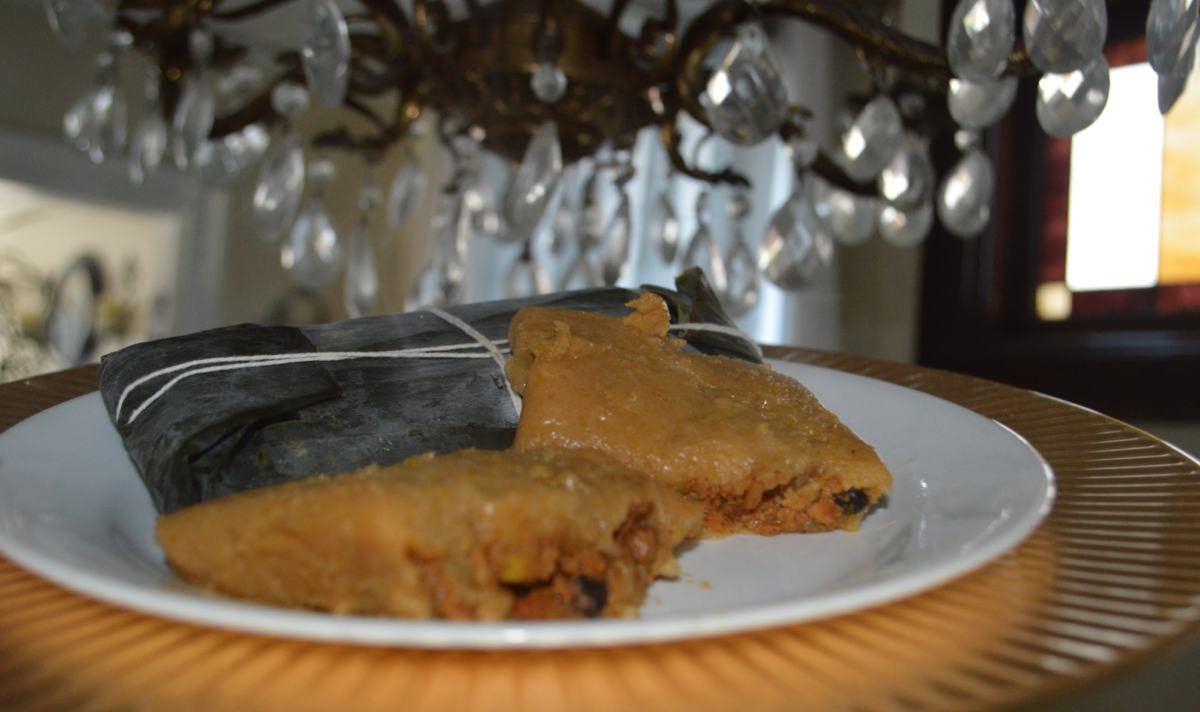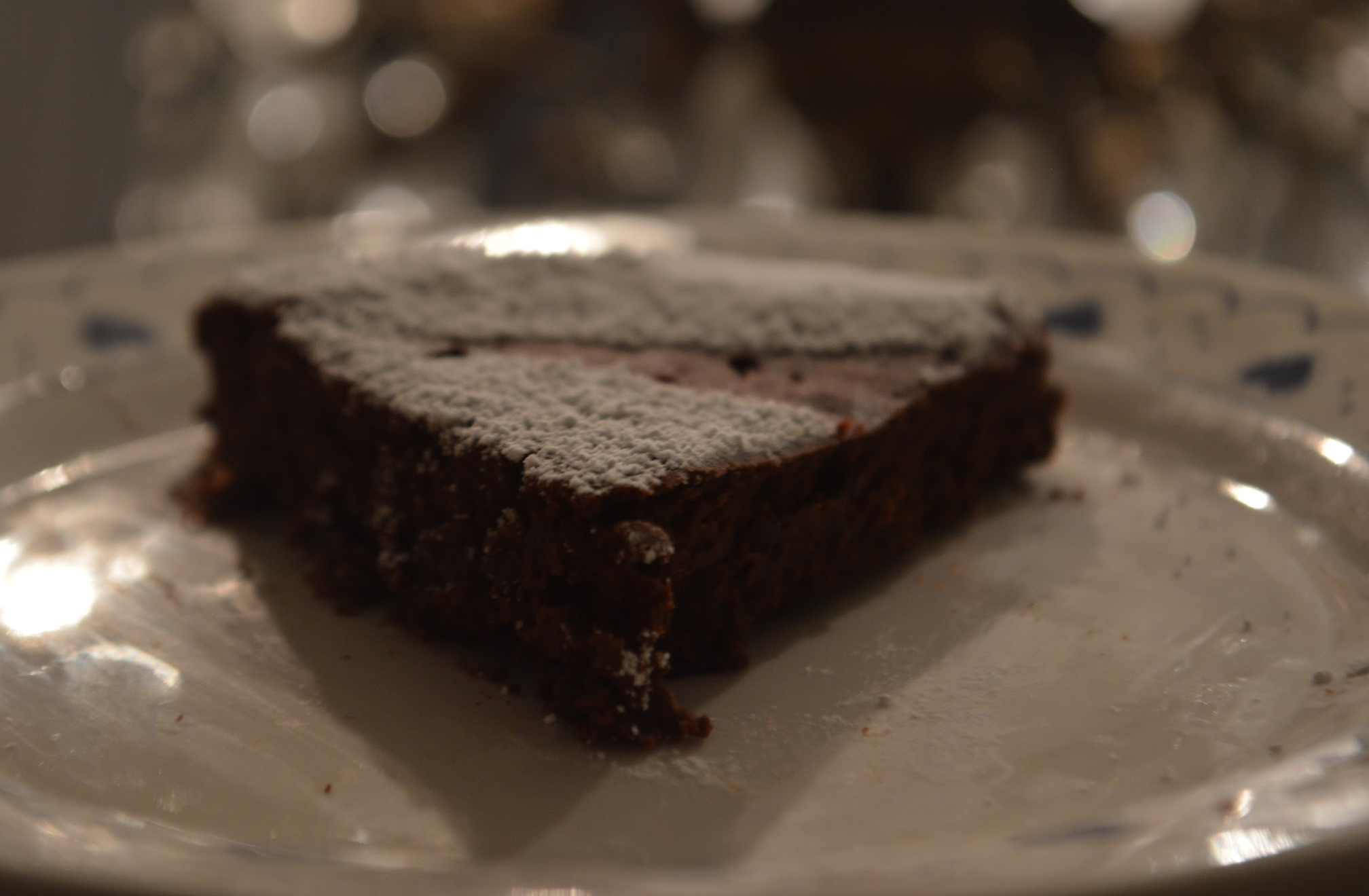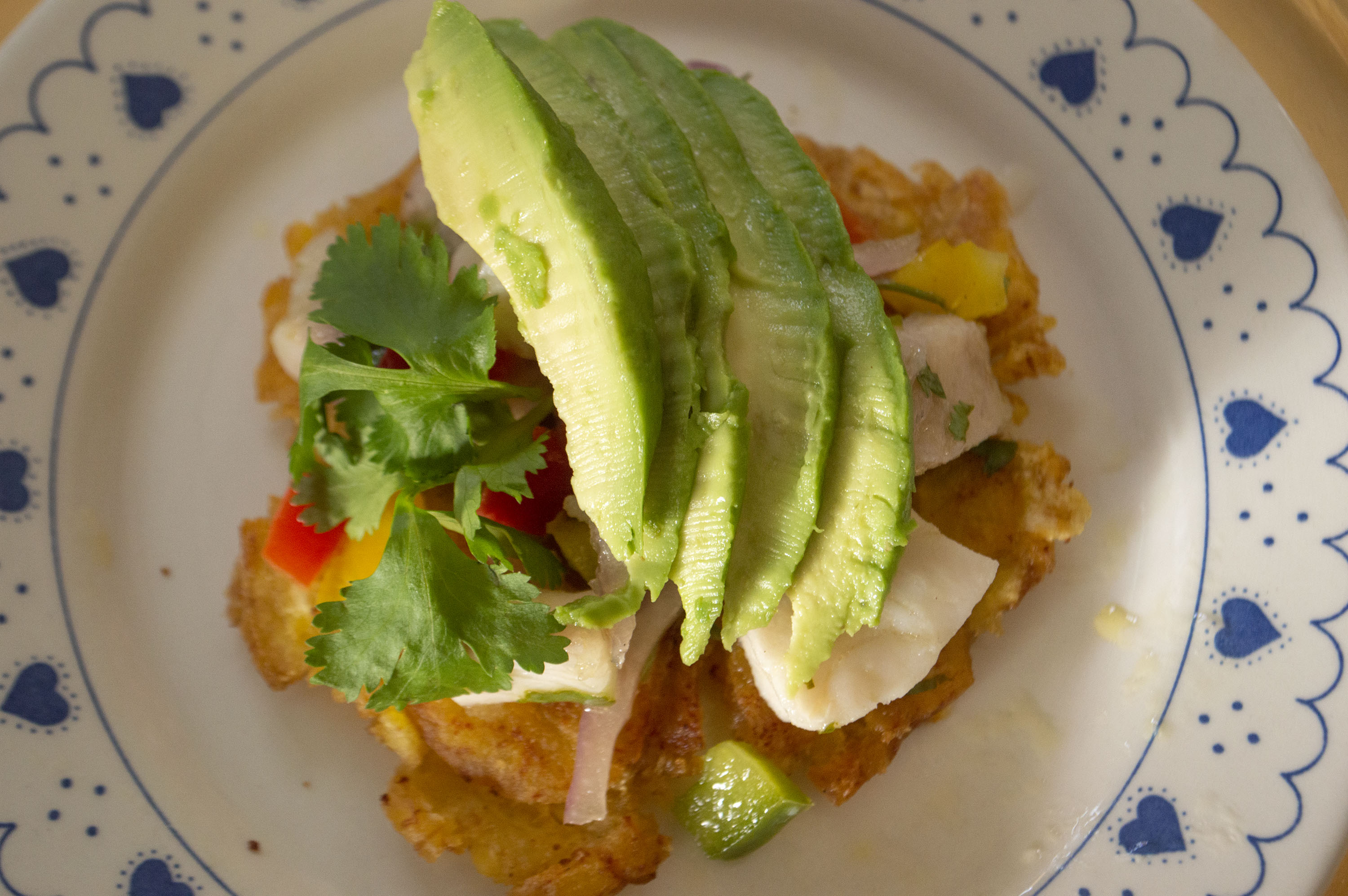This article appears in our November print issue. You can pick up a copy on newsstands around campus, or at our newsroom in room 520 in the University Center.
Every Thanksgiving season, children in the U.S. are taught the same story in their classrooms, nationwide. A group of pilgrims landed on Plymouth Rock, and learned to live off the land with the help of Native Americans. At the end of the harvest season, they all shared a big feast and gave thanks. This idyllic version of the first Thanksgiving only started circulating after the first World War, and after textbooks became mass marketed in schools across the country. In reality, the first Thanksgiving was a meal in celebration of the safe return of the colonial soldiers who had left to hunt down and murder 700 Pequot Indians around Mystic, CT, according to an essay by Aine Cain, a retail reporter for business insider.
Despite all of the associations with family and gratitude, the holiday’s grim history still haunts dining rooms across America. What if there was a way to keep the tradition of gratitude alive, while subverting colonialist practices and history?
The ‘decolonized diet’ as a term was coined by Devon Abbott Mihesuah in the 2003 book, “Recovering our Ancestors’ Gardens.” The diet consists of eating the way Indigenous people would have eaten before colonialism. That means cutting out beef, pork, sugar, wheat, dairy and any other types of food that would have been brought over by colonizers. For different cultures, the restrictions may vary depending on what types of food are native to a specific region.
Eugene Lang alum Talia Moore created a transmedia project called “Heartfed” as part of her senior capstone project. “Heartfed” focused on the intergenerational roots of food and its role in dealing with intergenerational trauma, migration, home and more.
“Food is culture because it’s essential to the way that everyone lives and survives,” said Moore. “Cooking is so influential to who I am as a person. The food that I’m feeding myself with is very ancestrally driven.”
Many people start decolonizing their diet as a way to get in touch with their roots. The lifestyle change may also be linked to health benefits. Dr. Luz Calvo, the author of the 2015 book, “Decolonize Your Diet: Plant-Based Mexican-American Recipes for Health and Healing,” credits the diet with being part of her recovery after a 2006 breast cancer diagnosis.
Miracle Baker is a third-year global studies major at Lang who only eats indigenous fruits, vegetables and grains. According to Baker, the diet helped with their anemia and fatigue. “I have an extreme amount of energy,” Baker said. “I have to work out at night to be able to go to sleep, that’s how much energy I have.”
The diet trend is also a part of a larger conversation about rejecting capitalism and colonialism, especially among social justice circles.
Dr. Sandpito Dasgupta is a Professor at The New School for Social Research who specializes in the political theory of empire, decolonization, and postcolonialism. According to Dasgupta, getting close to a fully decolonized diet is not as easy as cutting out certain ingredients.
“Capitalism is an extraordinarily global enterprise, against which it is very hard for us to find a point of escape,” said Dasgupta.
While expecting larger systemic change from a diet seems unrealistic, Dasgupta says that these types of consumption choices aren’t entirely futile.
“Our historical facts shape our world, fundamentally. We often see it. I think it’s important to acknowledge that these are ways in which you can make the invisible visible. That itself is a very important political role,” Dasgupta said. “People think food is food, it’s just taste. It’s not just taste. Food has history, food has power linked to it so it is important for us to acknowledge that and make that visible.”
The New School Free Press rounded up a series of decolonized diet recipes in time for Thanksgiving. Read below to learn how to make Tostones Con Ceviche, Pastel en Hoja and Chocolate Coconut Flour Cake.

Starter- Tostones Con Ceviche
Tostones are eaten all around the Caribbean. Ceviche is a seafood dish that has roots in Peru. Tilapia is a native African fish, commonly found in the Nile and in rivers around Mozambique.
You will need:
For Ceviche:
- 1 Pound of filed fish- Tilapia
- 20 Lemons
- 1 Whole red bell pepper
- 1 Whole green bell pepper
- 1 Whole orange bell pepper
- 1 Whole yellow bell pepper
- 1 Jalapeño pepper
- 1 Whole onion
- ½ Cup Olive Oil
- 1 Tablespoon apple cider vinegar
- Cilantro
- Salt
- Pepper
- Avocado (optional)
For Tostones:
- 2 Whole Plantains
- Vegetable oil
- Salt
Preparing Ceviche:
- Cut filed fish into cubes, place in large bowl and rinse the cubes with water
- Drain the bowl of water
- Dice each bell pepper and place chunks in the bowl with the fish
- Chop the onion, place it in the bowl
- Slice the jalapeño pepper into thin disks, place disks into the bowl
- Start squeezing the lemons into the bowl until the fish are completely submerged in the lime juice
- Add Cilantro, salt and pepper as needed,
- Toss and stir the ceviche until the contents are evenly dispersed
- Refrigerate for at least 8 hours, the acidity in the limes will cook the fish
Preparing Tostones
- Peel the two plantains and cut them into thick disks, enough to be divisible by four
- Fry the plantains in vegetable oil for three minutes at medium heat or until they start to become golden brown
- Remove the plantains from the oil, and place them onto a napkin to absorb the excess oil
- Take 4 pieces of plantain, place them close to one another, use a plantain smasher or other object with a flat surface to flatten them down.
- Repeat with each group of 4 plantains
- Place the flattened tostones back in the oil at medium heat for another 3 minutes or until you notice a color change.
- Remove tostones from oil
- Add salt
- Tostones are best eaten warm, it is best to wait 10 minutes before plating/serving/eating to start preparing tostones
Plating
- Slice Avocado
- Serve Ceviche over the tostones
- Place Avocado Slices over Ceviche

Main Course- Pastel en Hoja
Pastel en hoja is a holiday staple in the Dominican Republic and Puerto Rico
You will need:
For the Filling:
- 1 pound textured soy protein or meat substitute of your choice
- 1 Cubanelle Pepper
- 1 Red onion
- Pepper
- Salt
- ¼ cup Oil
- Tomato sauce
For the Masa:
- 2 Plantains
- 1 pound yautía
- 2 pounds auyama
- 1 pound yam
- Adobo
- Paprika
- ¼ cup non-dairy milk alternative
For the Wrap:
- Cooking twine
- Plantain leaves
How to Prepare
The filling:
- Dice the onion and cubanelle pepper into small cubes
- Pour oil into the saucepan
- Add the meat substitute, cubanelle pepper, and onion to a saucepan and cook over medium and high heat
- Cook for 10 minutes on medium heat, slowly add water by the tablespoon, add tomato sauce
- Mix and let simmer on low heat for five minutes, or until liquid evaporates
- Remove from heat and set to the side
The Masa:
- Peel and grate the plantain, yautia, yam and auyama
- Add milk, adobo, paprika, and salt
- Mix until it reaches an even consistency
Assembly:
- Cut the plantain leaves into 6in x 6in squares
- Take a handful of masa and place the mixture in the center of the plantain leaf, flatten it down
- Place meat filling in the center of the masa
- Cover the filling with more masa
- Fold the plantain leaf in the shape of an envelope and wrap it with cooking twine
- Repeat until you run out of filling
- Freeze for at least 3 hours
Preparation:
- Add salt to a deep pot of water
- Boil pasteles for 20 minutes over medium heat.

Dessert– Chocolate Coconut Flour Cake
Chocolate can be traced back to Central America as far back as 450 BCE.
You will need:
- 150 grams of Bittersweet chocolate, at least 70% Cacao
- ½ cup Coconut Oil
- 1 Cup Honey
- Half a Sweet Potato
- ½ cup of non-dairy milk alternative (rice milk, almond milk, oat milk)
- ¾ teaspoon vanilla extract
- 3 Large Eggs
- 1 Cup Ground Cacao
- ¼ teaspoon salt
- ⅓ cup Coconut Flour
- Parchment paper
Preparing the Cake:
- Preheat Oven to 350℉, cut a circle out of parchment paper the same dimensions as your baking pan, place the parchment paper at the bottom of the pan and line the sides of the pan with coconut oil
- Set water to boil
- Peel sweet potato, cut it up into chunks
- Boil the sweet potato for 10 minutes or until soft
- While the sweet potato boils, create a double boiler by filling a pot with water and set it to a simmer, and place another stainless steel or glass bowl over it. Make sure the water does not touch the inside of the bowl
- Add the chocolate and coconut oil and mix until the mixture becomes smooth
- Set melted chocolate to the side and let it rest
- Check on potatoes, when they are ready, drain the water from the bowl and mash the sweet potatoes.
- Mix with your choice of non-dairy milk alternative to create a puree
- In a separate bowl, add the honey and beat until fluffy
- Mix in the sweet potato puree
- Add the melted chocolate and vanilla extract to the mix
- Break and mix in each egg individually. Do not add another egg until the last one is evenly incorporated into the mixture.
- Keep mixing for 5 minutes to allow batter to rise
- Add salt
- Sift in coconut Flour and Cacao
- Stir until batter is even consistency
- Pour batter into baking pan and bake for 25-30 minutes







